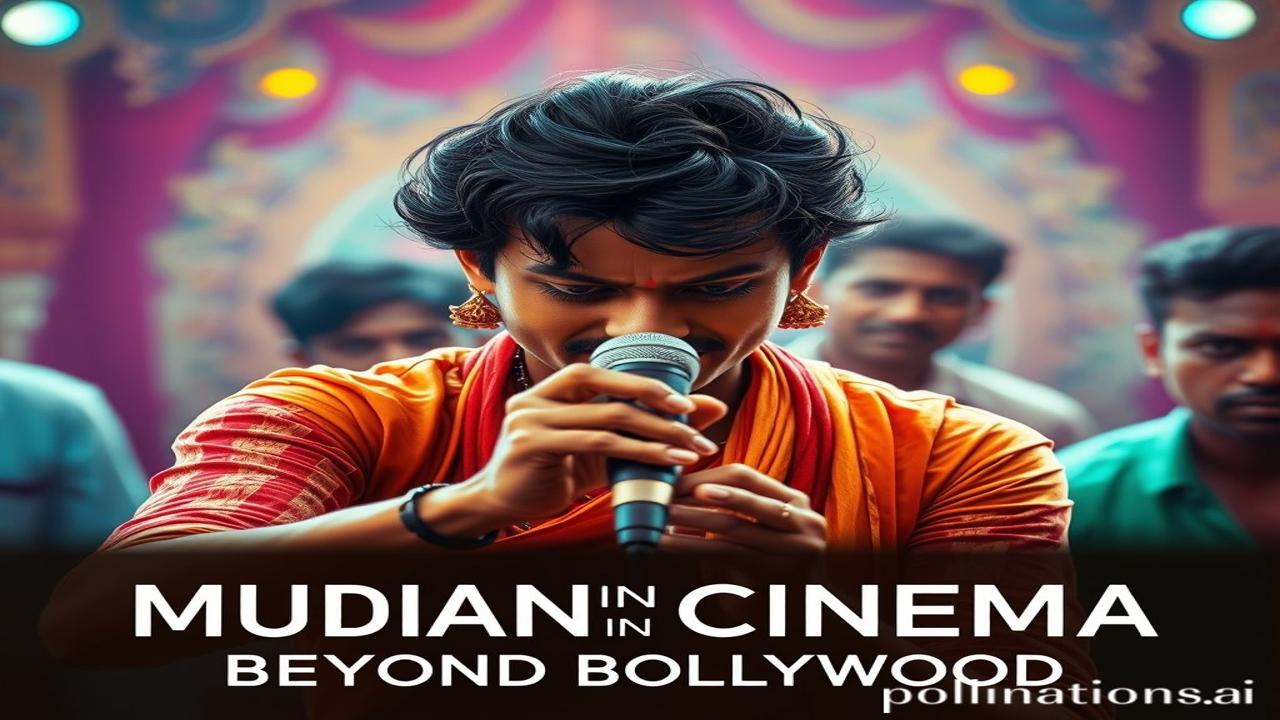Bollywood Se Pare: Unveiling the Hidden Melodies of Indian Cinema
Kabhi raat ke andhere mein, kisi chhote gaon ke radio se aati hui dhun suni hai? Aisi dhun jo na Bollywood ki chamak-dhamak wali, na hi classical raagon ki gehrai mein doobi hui hai. Woh ek alag hi duniya ki aawaz hai, ek aisi duniya jahan cinema sirf entertainment nahi, balki zindgi ka aaina hai. Aaj, hum usi bhooli-bisri duniya mein dubeinge, jahan Indian cinema Bollywood se pare bhi saanson ki tarah chalti hai.
From Silver Screen Dreams to Regional Rhythms: Ek Itihasik Nazar
What is this other world? It’s the vibrant, diverse landscape of regional Indian cinema, a world bursting with its own unique musical traditions. While Bollywood often dominates the narrative of Indian cinema, the truth is that regional films have been weaving their own magical tapestries of sound and story for decades.
When and where did it all begin? Parallel cinema movement ka time yaad hai? The late 1960s and 70s saw a rise in independent filmmakers who wanted to tell stories rooted in their local cultures. These films often rejected the formulaic Bollywood song-and-dance routines and instead embraced music that felt authentic and integral to the narrative. Think of Satyajit Ray’s work in Bengali, or Adoor Gopalakrishnan in Malayalam.
Why is this important? Because it reflects the true multi-culturalism of India! Bollywood, with its Hindi-centric approach, only tells one part of the story. Regional cinema, and its music, gives voice to the myriad languages, cultures, and experiences that make India so rich and complex. Ye dharti sirf ek rang ki nahi, hazaron rangon se bani hai!
Dhun Suno, Dil Se: The Human Element in Regional Melodies
Imagine a small village in Rajasthan. The air is thick with the aroma of spices and the sounds of traditional instruments – the ravanhatha, the kamaicha. Filmmakers like Shyam Benegal used these authentic sounds to paint a realistic portrait of rural life in films like “Manthan.”
Ma Ganga Devi, a farmer’s wife, hummed a folk song while grinding wheat. That song, passed down through generations, became the soul of a scene in a Rajasthani film, capturing the pain and resilience of rural women. Her story, amplified by the music, resonated with audiences far beyond the village.
Another scene: A fisherman in Kerala, singing a melancholic ballad about the sea’s unpredictability while mending his nets. That song, a poignant reminder of the precariousness of life, found its way into a Malayalam film, adding depth and authenticity to the narrative. A film that dared to be true to its roots.
These are just glimpses. Regional cinema is full of such stories – tales woven with the threads of local music, reflecting the joys, sorrows, and struggles of ordinary people.
Aaj Kal Ki Baat: Cultural Significance in the Modern Era
Today, regional cinema is experiencing a renaissance. Digital platforms have made these films more accessible than ever before. We see the echoes of these traditions in modern films too. Even Bollywood is taking note, incorporating regional folk elements into their soundtracks. But it’s not enough to just borrow a tune; the heart and soul of the music must be respected.
We see its presence in festivals, theatre, and even contemporary art. The sounds of the dholak in Punjab, the baul songs of Bengal, the Yakshagana music of Karnataka – these are all integral parts of India’s cultural fabric. They are echoes of Bharatiyata, connecting us to our past and shaping our identity.
Kuch Mazedar, Kuch Hairatangez: Fun Facts & Myth-Busters
Log samajhte hain ki Bollywood hi Indian music hai…lekin asli sach yeh hai ki regional music is older, deeper, and more diverse. It’s the foundation upon which Bollywood’s success is built.
Did you know that many regional films are made with budgets that are a fraction of what Bollywood spends? Yet, they often win national and international awards, proving that good storytelling and authentic music can transcend budgets and language barriers.
Awaaz Se Nazar Tak: Sensory Symphony
The air smells of sandalwood and incense as you enter a temple in Tamil Nadu. The rhythmic chanting of priests blends with the sounds of the nadaswaram, a traditional wind instrument. That feeling, that sound, is captured in many Tamil films, transporting you to another world.
The temple walls are cool to the touch, adorned with intricate carvings that tell stories of gods and goddesses. The echo of the prayers resonates in your heart, reminding you of your connection to something larger than yourself.
Antim Vichar: A Closing Note
Music is the soul of cinema, and regional music is the soul of India. Let’s celebrate the diversity and richness of these melodies, and ensure that they continue to thrive for generations to come.
“संगीतम् बिना जीवनम्, न भवति पूर्णम्,
भारतीय संस्कृति: संगीतम्, अस्माकम् गौरवम् ।” (Sangeetam bina jeevanam, na bhavati poornam, Bharatiya sanskriti: sangeetam, asmakam gauravam.)
(Life without music is incomplete. Indian culture: music, our pride.)
